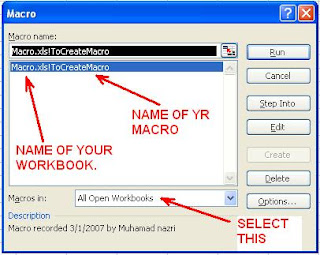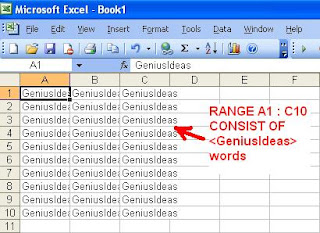OpenOCD Quick Reference Card
OpenOCD Homepage: http://openocd.berlios.de
Current OpenOCD revision: 128Server
Configuration Commandstelnet port Listen for telnet connections on port.
gdb port Listen for GDB connections on port, port+1, . . .
(target 1, target 2, . . . )
User Commandsshutdown Shut server down.
exit Exit telnet. Leaves server running.help Print available commands.
InterpreterThe interpreter commands may be used to define variables used within other subsystems like JTAG.
var [’del’|([size1] [sizeN])] Allocate, display or delete
variable. Allocation has to define the size for all num fields elements.
field [value| ’flip’ ] Display or modify variable field.script Execute commands from file.
TargetConfiguration Commands
target Target type is arm7tdmi, arm9tdmi, arm720t, arm920t, arm926ejs,arm966e; endianness is either big or little; reset mode is one of reset halt, reset run,reset init, run and halt, run and init. Do not use reset halt orreset init on LPC2 or STR7.
target arm7tdmi [variant] variant is one ofarm7tdmi r4, arm7tdmi-s r4,
lpc2000.
target arm9tdmi [variant] variant is one of arm920t, arm922t and
arm940t.
daemon startup <’reset’|’attach’> Describes what to do with target on
daemon startup.
target script event is either post halt or pre resume.run and halt time Delay in msec between reset and debug request.
working area [backup|nobackup]User Commands
targets [num] Display list of configured targets,
or make target num the current target.reg [#|name] [value|’force’] Display or modify registers.poll [’on’|’off’] Print information about the current target state. If the target is in debug mode, architecture specific information
about the current state are printed. Enable or disable continuous polling with optional parameter. wait halt Wait for target halt halt Halt target
resume Resume the target at
the current position or at address.step
Single-step at the
current position or at address.reset [’run’|’halt’|’init’|’run and
halt’| ’run and init’] Reset
the target in a few variations.soft reset halt Halt
the target and do a soft reset.
md[whb] [count]
Display count words (32 bit),
half-words (16 bit) or bytes at address.
If count is omitted, one element is
displayed.
mw[whb] Write
value at theword, half-word or byte
location address.
bp [hw] Set
a breakpoint of length bytes at address.
rbp Remove breakpoint at address.
wp[value]
[mask] Set a watchpoint of length bytes
at address.
rwp Remove a watchpoint at address.
load binary
Load binary file into target
memory (RAM) at address.
dump binary Dump target memory of size bytes at address
intofile.
ARM v4/5
armv4 5 reg Display all banked ARM core
registers.
armv4 5 core mode [’arm’|’thumb’] Display thecurrent core state, or
switch between Arm and Thumb state.
armv4 5 disassemble [’thumb’] Disassemble instructions
ARM720T
The commands are cp15, virt2phys, mdw phys, mdh phys, mdb
phys, mww phys, mwh phys, mwb
phys.
See ARM7/9 for a short description.
ARM 7/9
arm7 9 write xpsr Write the program status register.
spsr selects between the current program status register (0) and the saved
program status register (1) of the current mode.
arm7 9 write xpsr im8 <8bit> Same as write xpsr, but use the
immediate operand opcode.
arm7 9 write core reg Write core register num of mode with value.
arm7 9 sw bkpts Enable or disable the use of
software breakpoints.
arm7 9 force hw bkpts Force the use of hardware breakpoints.
arm7 9 dbgrq Use EmbeddedICE dbgrq instead of
breakpoint for target halt requests (safe for all except ARM7TDMIS).
arm7 9 fast memory access Use fast but potentially unsafe memory accesses
instead of slow accesses. Assumes a sufficiently high clock speed.
arm7 9 dcc downloads use DCC downloads for larger memory writes.
ARM920T
arm920t cp15 [value] Display/modify CP15 register
arm920t cp15i
[value] [address]Display/modify
cp15 (interpreted access) arm920t cache info Display information about target caches.
arm920t virt2phys Translate
virtual to physical address.
arm920t md[whb]
phys [count] display
memory word, half word, byte
arm920t mw[whb]
phys write memory word,
half word, byte
arm920t read cache display I/D
cache content
arm920t read mmu display I/D
mmu content
ARM926EJ-S
arm926ejs ... XXX To Do ARM966E
arm966e cp15 [value] Display/modify
CP15 register
JTAG
Configuration Commands
interface – name is one of parport,amt jtagaccel, ft2232, ep93xx
jtag_device
<mask> –
Describes the devices that form the JTAG daisy chain, with the first device
being the one closest to TDO.
jtag nsrst delay – ms milliseconds delay between going nSRST inactive and
following JTAG operations.
jtag ntrst delay – ms milliseconds delay between going nTRST inactive and
following JTAG operations.
reset config
[combination] [trst-type] [srst-type] – signals
is one of none, trst
only, srst only or trst and srst. Combination is one of srst pulls trst, trst pulls srst, combined,
separate. trst-type is one oftrst open drain, trst push
pull. srst-type is one of srst push pull, srst open
drain. User &
Config Commands
jtag speed Select JTAG Speed ft2232: 6 MHz / (value+1) parport:
maximum speed /value amt
jtagaccel: 8 / 2**value
Note: Max. JTAG-Clock _ 1
6 × CPU-Clock!
Parport
parport port – Either I/O port address
(e.g. 0x378) or the number of the
/dev/parport device.
parport cable – name is one of wiggler, old amt wiggler, chameleon, dlc5 (Xilinx
cable III), triton.
Amt jtagaccel
parport port see previous description.
Ft2232
ft2232 device desc USB device description. Use usbview or similar tool to get this string.
ft2232 layout Layout name is one of jtagkey, usbjtag, signalyzer, olimex-jtag, m5960, evb
lm3s811 .
ft2232 vid pid Vendor-ID vid and product-ID pid of
the FTDI device.
User Commands
scan chain
Print scan chain
configuration.
endstate Finish JTAG operations in tap state.
jtag reset
Toggle reset lines.
runtest Move to Run-Test/Idle and execute num cycles. statemove Move to current endstate or tap state.
irscan
[devN] [instrN] Execute
IR scan.
drscan [devN] [varN] Execute DR scan.
Flash
flash banks
Display list of
configured flash banks
flash info
Display information and
list of
blocks of
flash bank num.
flash probe
Probe flash bank num if it
matches the
configured bank.
flash erase check Check erase
state of flash sectors in bank num.
flash protect check Check protect
state of flash sectors in bank num.
flash erase Erase sectors at bank num, starting at sector first up to
and including last. Sector numbering starts at 0.
flash write Write binfile (in binary
format!) to bank num at offset bytes
from start of bank.
flash protect <’on’|’off’>
Enable (on) or disable (off)
protection of flash
sectors first to last of flash bank num.
flash bank [driver options...] Configure a flash bank at address base of size bytes with
a bus of bus width bits formed by chips of chip width bits size using driver lpc2000, cfi, at91sam7, str7x,
str9x.
flash bank lpc2000 0 0[’calc
checksum’] The internal
flash of LPC2000 devices doesn’t require
chip- and buswidth to be defined.
The
lpc variant specifies the supported IAP commands
of the device (lpc2000 v1:2104—5—6, 2114—9,
2124—9, 2194, 2212—4, 2292—4; lpc2000 v2:
213x, 214x, 2101—2—3). The flash
bank is part
of target# which runs at cclk kHz.
Calc checksum
inserts a valid checksum into the
exception vector
when this area is flashed.
For LPC2138 and LPC2148 devices, the
size argument
has to reflect the user-accessible
size, i.e.
0x7d000 (500kB), not 0x80000
(512kB).
flash bank at91sam7 0 0 0 0
flash bank str7x 0 0
– variant is one of STR71x,
STR73x or STR75x.
flash bank str9x 0 0 0
The str9 needs the flash controller
to be configured
prior to Flash programming:
str9x flash config b0size b1size
b0start
b1start
Example: str9x flash config 4 2 0 0x80000
This will setup the BBSR, NBBSR,
BBADR and
NBBADR registers respectively.
flash bank cfi
at91sam7 gpnvm set|clear set or
clear at91sam7 gpnvm bit
lpc2000 part id print part id of lpc2000
flash bank num
XSVF
xsvf Program Xilinx Coolrunner
CPLD
PLD
XXX To Do
Commandline Options
$ openocd --help
Open On-Chip Debugger
(c) 2005 by Dominic Rath
--help | -h display this help
--file | -f use configuration file
--debug | -d set debug level
<0-3>
--log_output | -l redirect log
output to file
--interface | -i use jtag interface
driver
Sample Configuration
[see $(SRCDIR)/doc/configs/*.cfg]
Some GDB commands
(gdb) target remote localhost:3333
(gdb) monitor arm7 9 force hw bkpts
enable
force hardware breakpoints
More information
- Get current version with
Subversion
svn co
svn://svn.berlios.de/openocd/trunk
- OpenOCD Forum at Spark Fun
Electronics
http://www.sparkfun.com/cgi-bin/phpbb/
viewforum.php?f=18
- OpenFacts
http://openfacts.berlios.de/index-en.phtml?
title=Open_On-Chip_Debugger
- Mailing List “openocd-development”
http://developer.berlios.de/mail/?group_id=
4148
- Yagarto ARM toolchain (Windows)
http://www.yagarto.de
- Amontec JTAGkey[-Tiny], sdk4arm
http://www.amontec.com
- Olimex ARM-USB-TINY, ARM-USB-OCD
http://www.olimex.com
QuickRef written by
Hubert.Hoegl@fh-augsburg.de
Date: 2007-02-03
Download this QuickRef from
http://www.fh-augsburg.de/~hhoegl/proj/openocd/oocd-quickref.pdf














 Must have book for Practical Radio Frequency Designers.
Must have book for Practical Radio Frequency Designers.